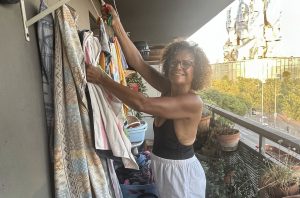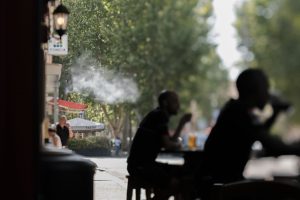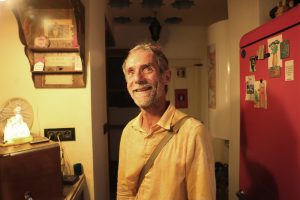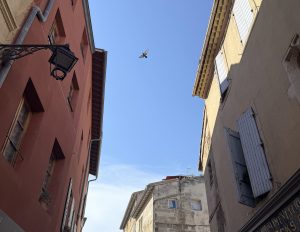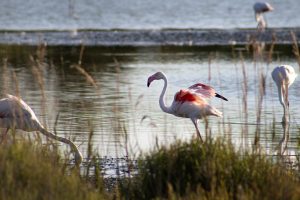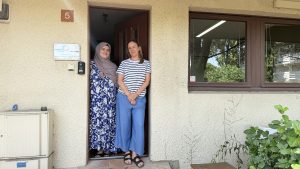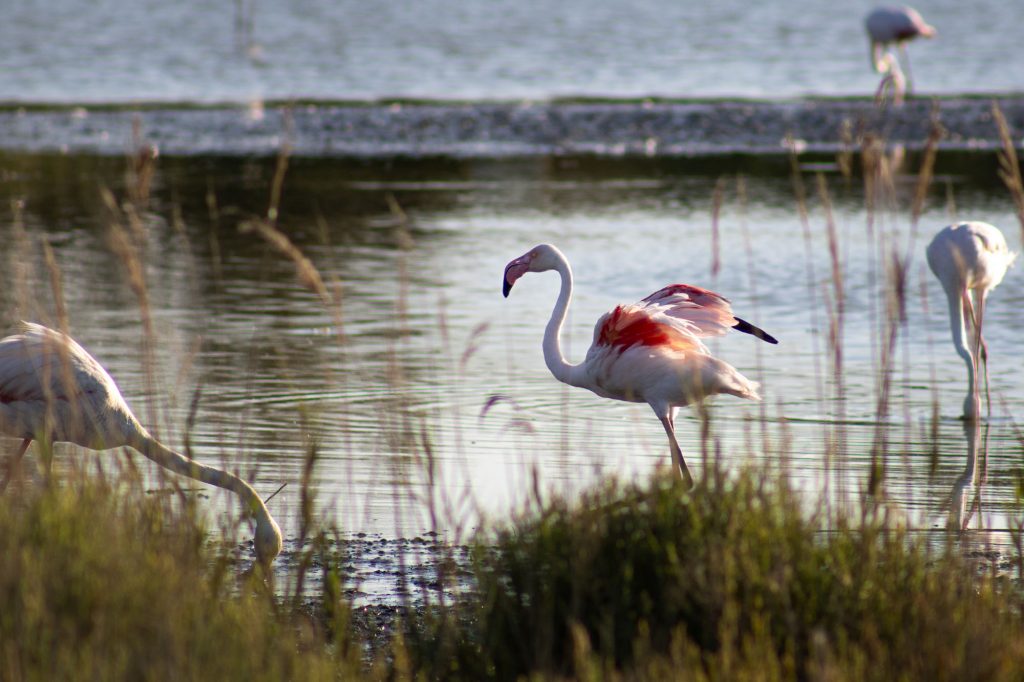
A greater flamingo adjusts its wings during a twilight guided tour at the Ornithological Park of Pont de Gau. Photo by Victoria Medina.
Text by Victoria Medina
Photos by Victoria Medina and Griselda Garcia
For 40 years, the Salin de Giraud, a salt marsh in the Camargue near Arles, was home to one of the largest colonies of greater flamingos in the world. Visitors could sometimes witness a spectacular display of pink feathers soaring through the sky as the birds flew from ponds where they fed to Étang du Fangassier, the lagoon where they nested.
Now, it is harder to see the large, vibrant congregation of birds since many have settled in Étang du Roi, a lagoon in Les Salins d’Aigues-Mortes, over the past decade.
As the species is nomadic, traveling to new environments for survival is no issue for them.
But for researchers with Tour du Valat, a research institute for the conservation of Mediterranean wetlands, the colony’s change in location makes it challenging to observe the species, as Aigues Mortes is almost 50 miles west of the Salin de Giraud.
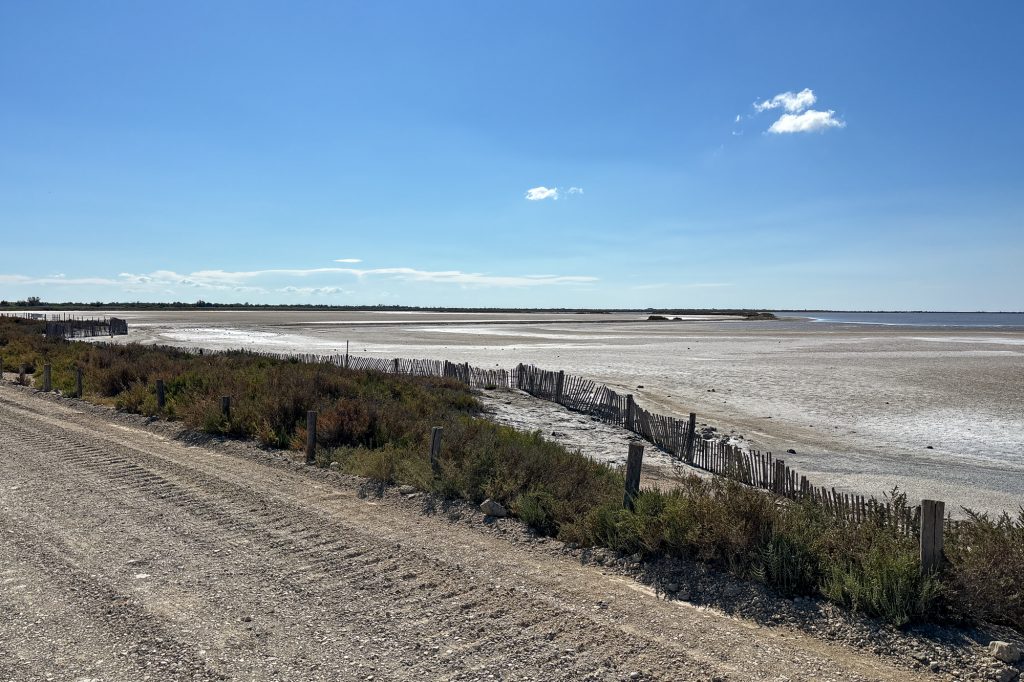
Jean Emmanuel Roché, a nature photographer and former water ecology consultant, worked with Tour Du Valat for many years. During that time, he learned about flamingos and the many aspects of their behavior.
“They live along the coast, mainly where you have a lot of salt because they eat crustaceans, algae, et cetera that grow in salt environments,” said Roché. “They look for islands for breeding because it’s a place where predators cannot eat their eggs or chicks.”
Creating a nesting ground
Roché described how this colony began to breed regularly in the Giraud after some years of absence. Swiss conservationist and philanthropist Luc Hoffmann, the founder of Tour du Valat, encouraged the birds to nest in the area in the 1970s. To achieve this, Hoffmann and his team created an artificial island and mud nests to give the species the impression that the location was safe for breeding, as if other flamingos had previously used the land.
After a few years, the species settled into the Étang du Fangassier of the Giraud and had decades of successful breeding in the area. This was an impressive feat for Hoffmann and his team, as greater flamingos were a rarity in Europe.
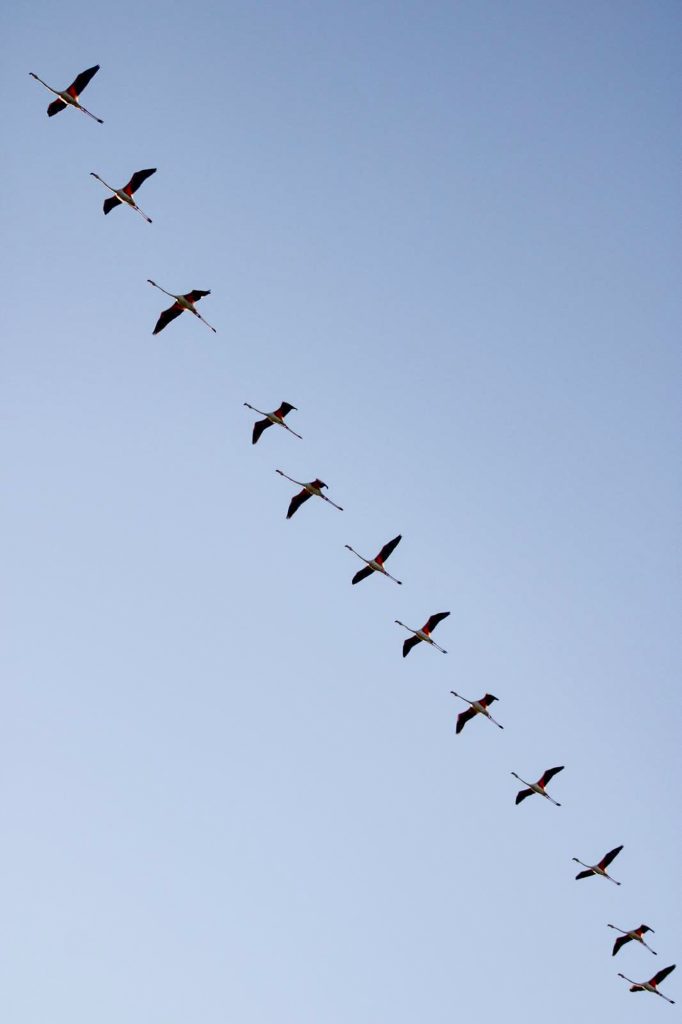
Antoine Arnaud, Tour du Valat’s fieldwork and database engineer, has been working with the organization for 25 years. He and his team go out and count the flamingos in Salin de Giraud every January and in the middle of May, after the mating season, to observe the change in population size from the previous year. He stressed the importance of having a base for flamingo research and why the researchers must continue their work.
“At the beginning, it was really important, because it was an endangered species,” said Arnaud. “We have no problem for the population now, but we still need to have some good place for the breeding of flamingos in the Mediterranean.”
Arnaud said that if Tour du Valat misses a year of ringing the flamingos – whether because of a decrease in breeding or a change in regulation of their new nesting site – it would not pose an issue for Tour Du Valat. The institute has partnerships with researchers in Spain, Italy and Turkey with whom they exchange data.
However, if researchers are not able to ring the birds for two or more years, it could impact the organization’s long-term study on greater flamingos and lead to gaps in their research.
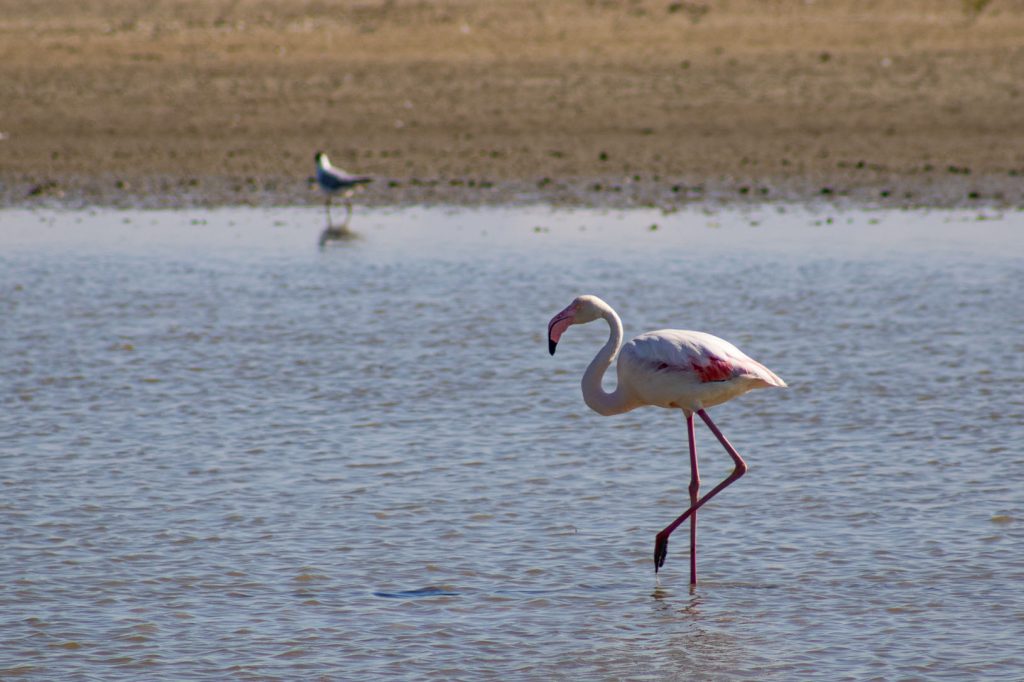
A delicate species
Roché said the greater flamingo species is very delicate and relies on long-term survival strategies, as they can live as long as 50 years in the wild. They begin mating between the ages of 5 and 6, and then regularly breed after the age of 10. Each season, a flamingo will choose a new partner to pair with and produce one egg.
Nicole Yavercovski, a former botanist for Tour du Valat, has developed expertise in the plants and species of the Camargue wetlands, the most threatened natural habitat in Europe. She has participated in the ringing of flamingo chicks approximately five times over the years and recounted an instance where the birds were startled by a black swan who reached their island during the breeding season.
“Flamingos are very sensitive to disturbance,” said Yavercovski. “For example, one year ago a black swan was just walking beyond the colony. The flamingos panicked, and many broke their eggs.”
Greater flamingo nesting sites need water levels high enough to protect them from predators and tranquility in their surroundings to prevent alarm. Wildlife photographers and filmmakers capturing images can also disturb the birds.
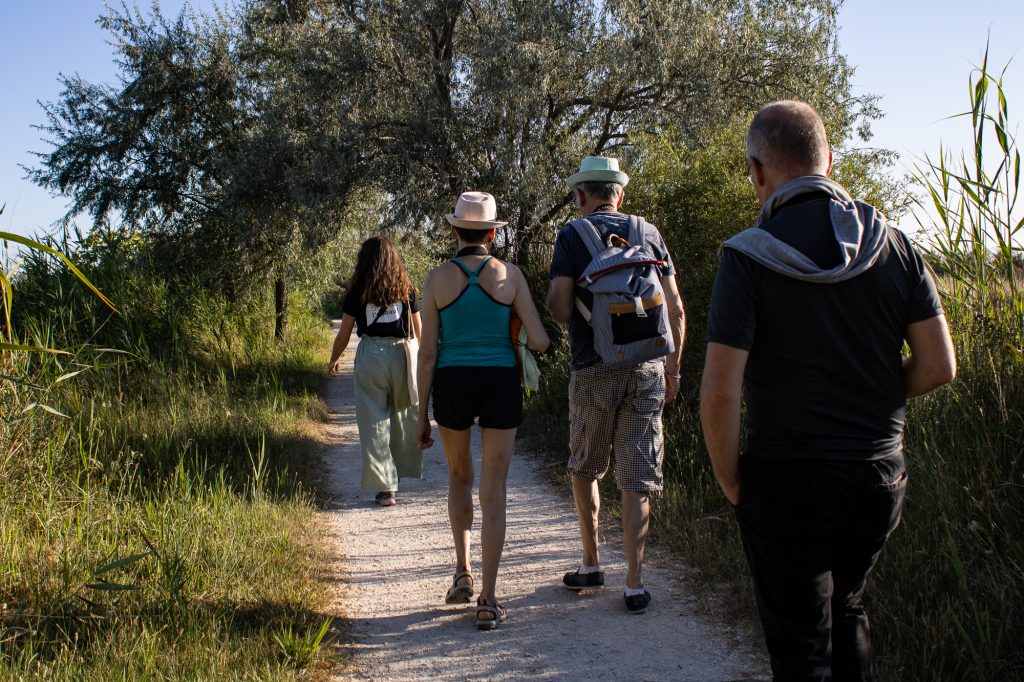
Roché said many tourists would come to see the great colony of the Salin in previous years, but the chances of seeing the birds are now low in comparison. Since the birds have been a tourist attraction for many decades, a drop in visitor numbers is expected over the next few years.
Some Salin de Giraud residents are concerned that land in the area has deteriorated from Tour du Valat bringing saltwater into the lagoons, Roché said. The organization does this to manage the water levels in the marsh, as the rising temperatures caused by climate change led to the quick evaporation of the water in the lagoons. The land of Salin de Giraud is very flat, making it difficult for water to travel through the area on its own. Man-made canals, along with the strong coastal winds, help push the water through the wetlands.
These canals have been part of Tour du Valat’s efforts to maintain the Étang du Fangassier, along with preserving the island used for their nesting, in case the birds decide to return. As previously mentioned by Arnaud, it is part of their mission to keep a safe place for the flamingos to breed.
“It is an opportunity offered to flamingos,” said Roché. “Some part of this population may decide to breed here again in the future.”
The greater flamingos are part of the Camargue’s identity and are significant to the work Tour du Valat has conducted for the ecosystem of Mediterranean wetlands. As the nomadic colony continues to thrive, there is one question left. Will the iconic pink-feathered birds return to Étang du Fangassier?
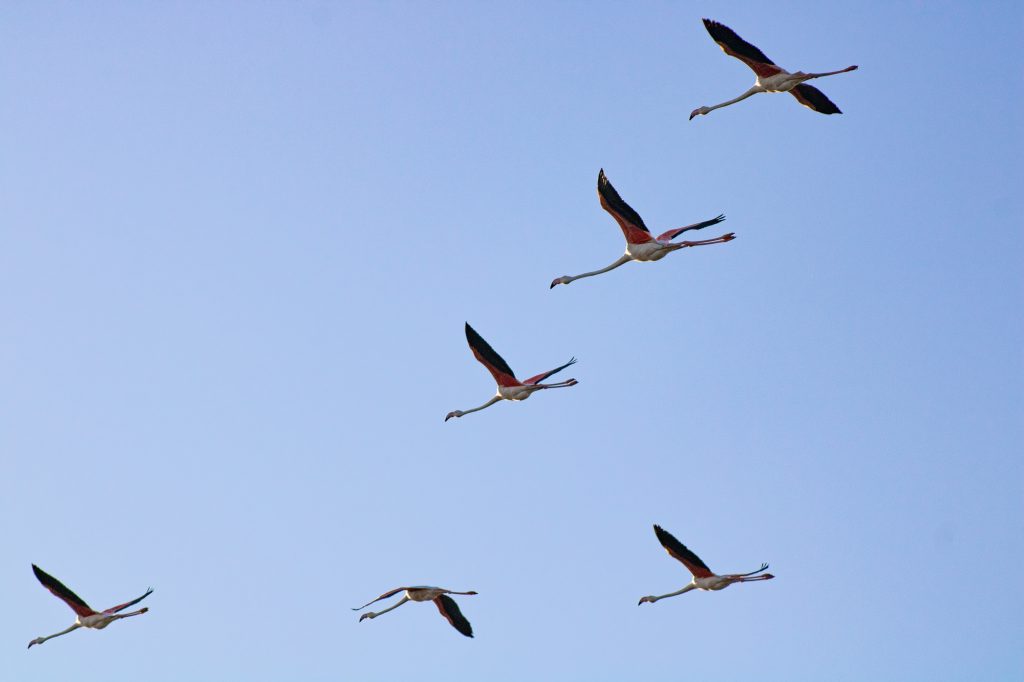
Klaudia Chazalon and Katie Thornton served as interpreters for this story.

